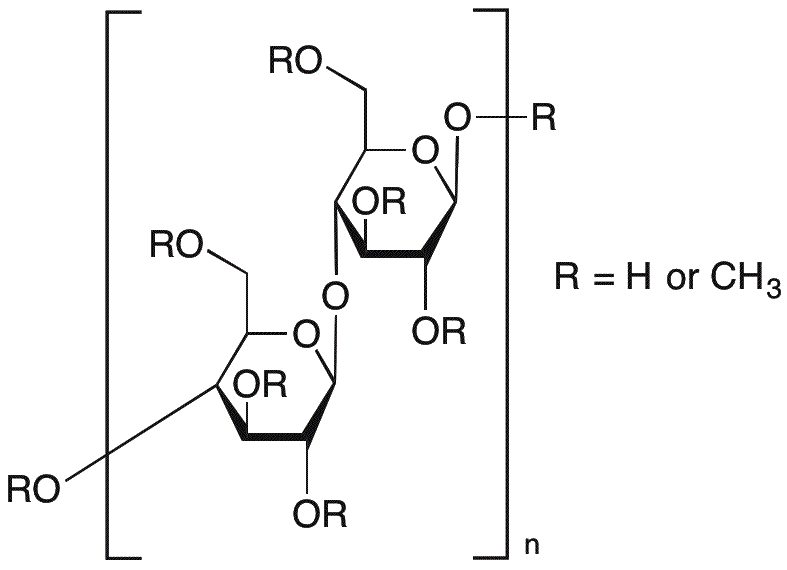Methyl cellulose is widely utilized in research focused on:
- Food Industry: It serves as a thickening and stabilizing agent in various food products, enhancing texture and preventing separation in sauces and dressings.
- Pharmaceuticals: This compound is used as a binder and film-forming agent in tablets and capsules, improving the delivery and effectiveness of medications.
- Cosmetics: Methyl cellulose acts as a thickener and emulsifier in lotions and creams, providing a smooth application and enhancing product stability.
- Construction: In building materials, it is used to improve the workability and adhesion of mortars and plasters, making them easier to apply and more durable.
- Research Applications: It is commonly used in laboratory settings as a medium for cell culture and as a protective coating for sensitive biological samples, ensuring their integrity during experiments.
General Information
Properties
Safety and Regulations
Applications
Methyl cellulose is widely utilized in research focused on:
- Food Industry: It serves as a thickening and stabilizing agent in various food products, enhancing texture and preventing separation in sauces and dressings.
- Pharmaceuticals: This compound is used as a binder and film-forming agent in tablets and capsules, improving the delivery and effectiveness of medications.
- Cosmetics: Methyl cellulose acts as a thickener and emulsifier in lotions and creams, providing a smooth application and enhancing product stability.
- Construction: In building materials, it is used to improve the workability and adhesion of mortars and plasters, making them easier to apply and more durable.
- Research Applications: It is commonly used in laboratory settings as a medium for cell culture and as a protective coating for sensitive biological samples, ensuring their integrity during experiments.
Documents
Safety Data Sheets (SDS)
The SDS provides comprehensive safety information on handling, storage, and disposal of the product.
Product Specification (PS)
The PS provides a comprehensive breakdown of the product’s properties, including chemical composition, physical state, purity, and storage requirements. It also details acceptable quality ranges and the product's intended applications.
Certificates of Analysis (COA)
Search for Certificates of Analysis (COA) by entering the products Lot Number. Lot and Batch Numbers can be found on a product’s label following the words ‘Lot’ or ‘Batch’.
Numéro de catalogue
Numéro de lot/série
Certificates Of Origin (COO)
This COO confirms the country where the product was manufactured, and also details the materials and components used in it and whether it is derived from natural, synthetic, or other specific sources. This certificate may be required for customs, trade, and regulatory compliance.
Numéro de catalogue
Numéro de lot/série
Safety Data Sheets (SDS)
The SDS provides comprehensive safety information on handling, storage, and disposal of the product.
DownloadProduct Specification (PS)
The PS provides a comprehensive breakdown of the product’s properties, including chemical composition, physical state, purity, and storage requirements. It also details acceptable quality ranges and the product's intended applications.
DownloadCertificates of Analysis (COA)
Search for Certificates of Analysis (COA) by entering the products Lot Number. Lot and Batch Numbers can be found on a product’s label following the words ‘Lot’ or ‘Batch’.
Numéro de catalogue
Numéro de lot/série
Certificates Of Origin (COO)
This COO confirms the country where the product was manufactured, and also details the materials and components used in it and whether it is derived from natural, synthetic, or other specific sources. This certificate may be required for customs, trade, and regulatory compliance.


